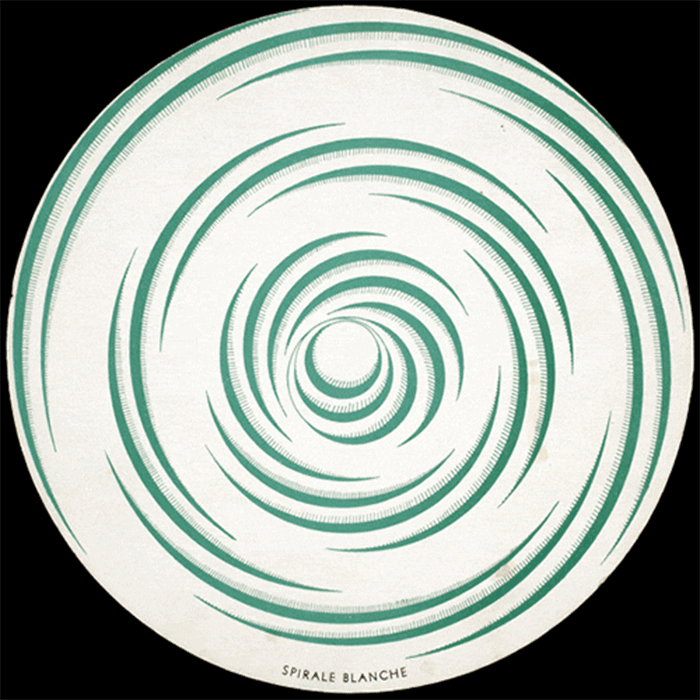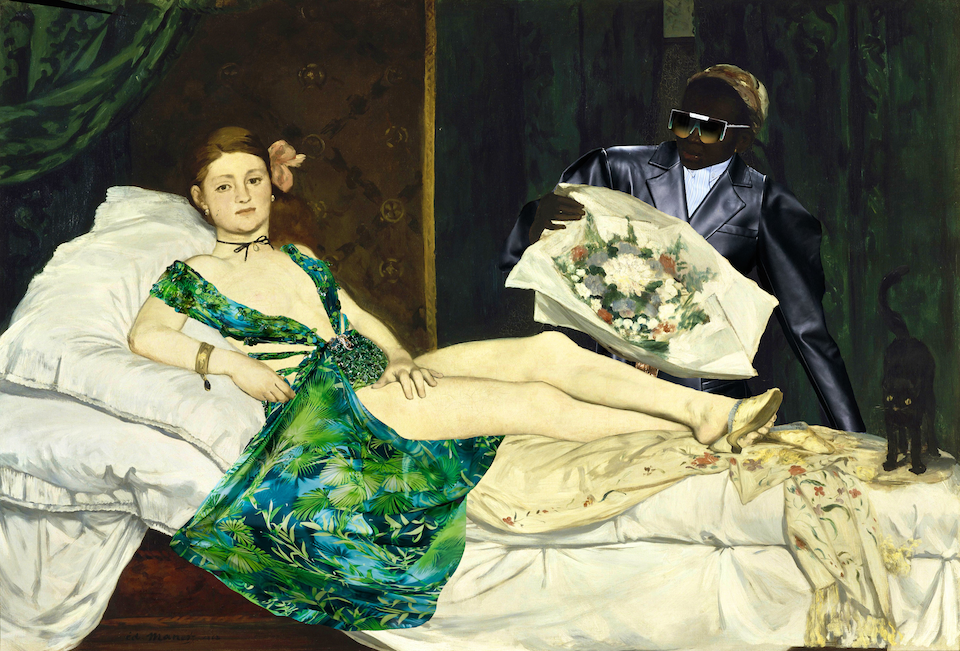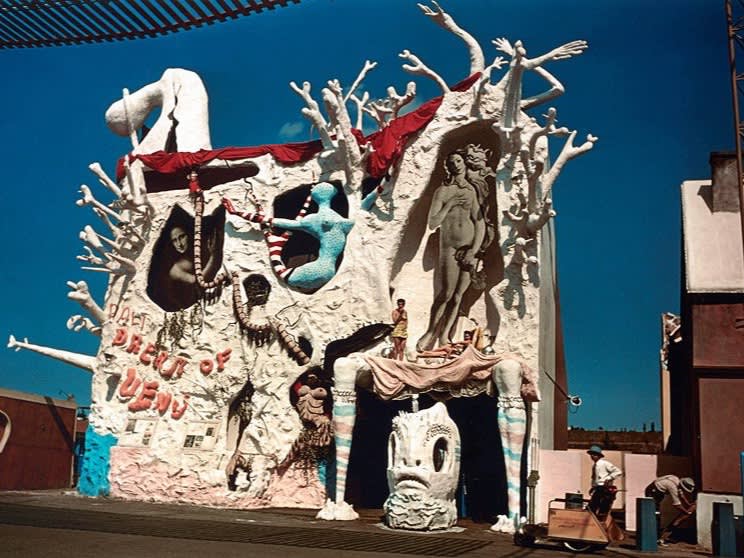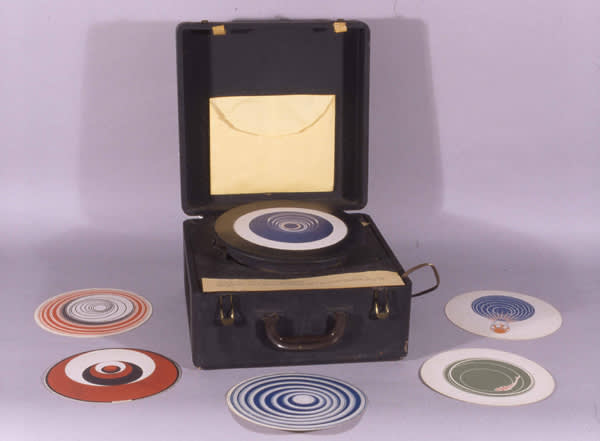
Marcel Duchamp
Rotoreliefs, 1935/53

Marcel Duchamp
6 Rotoreliefs
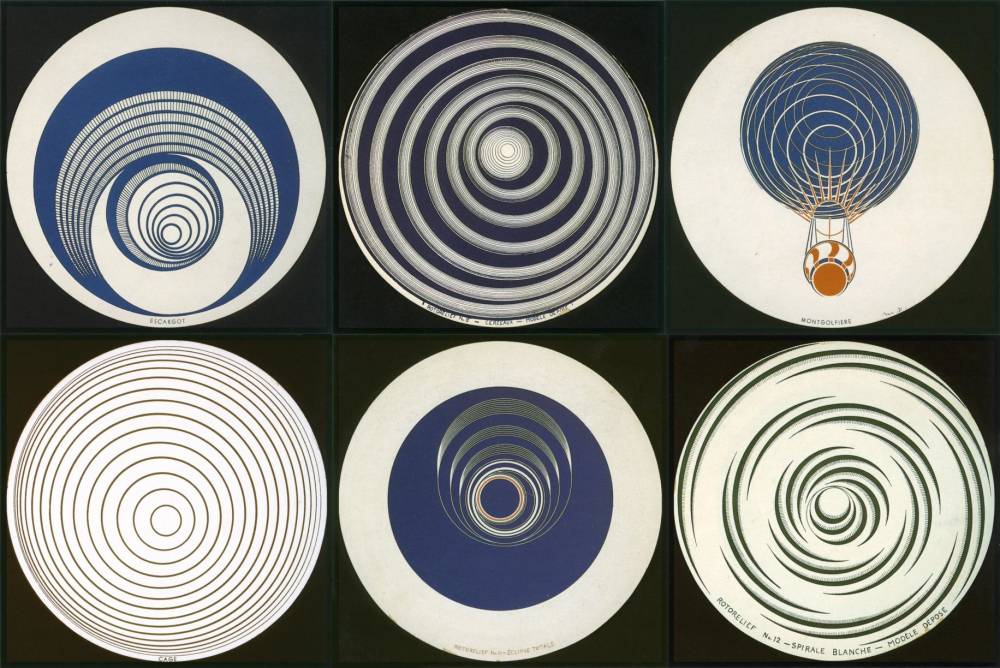
Marcel Duchamp
6 Rotoreliefs
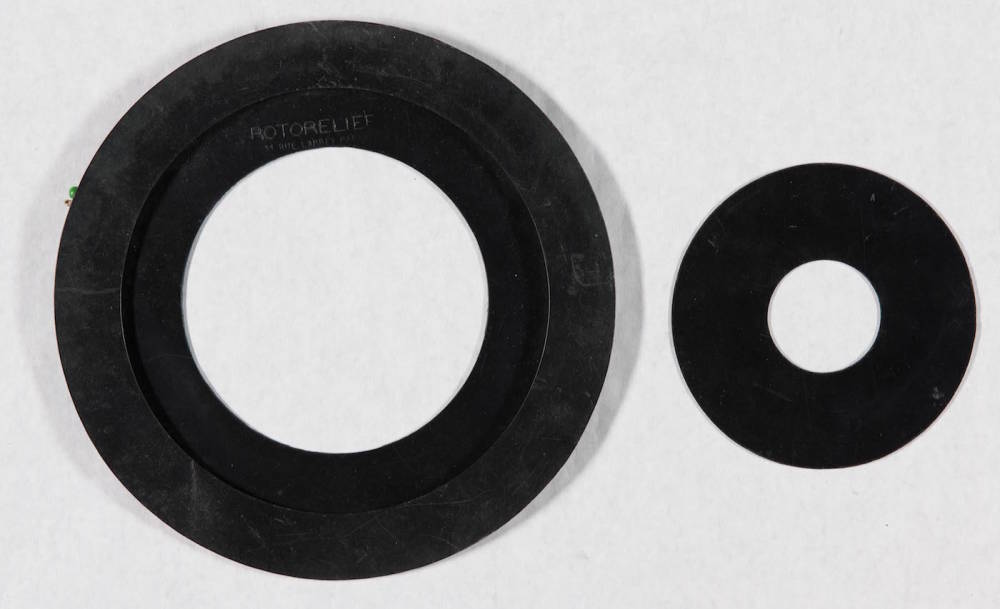
Marcel Duchamp
Plastic holder for Rotoreliefs, 1935
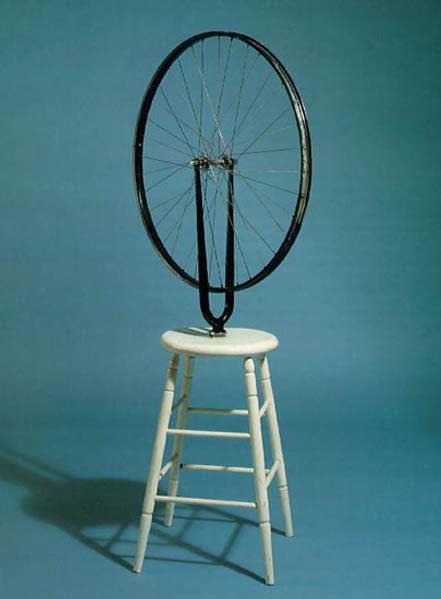
Marcel Duchamp
Bicycle Wheel, 1913
By the mid-1920s, French artist Marcel Duchamp had reached critical acclaim, largely due to his early cubist paintings and groundbreaking series of “readymades”. Just after Duchamp became internationally known, he abandoned his artistic trajectory and started to focus on creating ideas rather than creating art.
By the 1930s, Duchamp began experimenting with visual experience, exploring both optical illusion as well as the interplay between art and design. In 1935/1953 he published Rotoreliefs, a set of six double-sided optical disks, printed with unique designs on either side, to be spun on a turntable at 40-60 RPM (Revolutions per minute). Duchamp was interested in how by rotating the two-dimensional surface at the desired speed you are in turn exploring a visual relief of depth. Each of the 12 lithographs displayed colorful and sometimes comical imagery, ranging in focus from optical spirals to a Japanese koi fish and a hot air balloon. Duchamp’s rotoreliefs satisfied the artist’s ongoing interest in mechanical art and optics, furthering his exploration of kinetic works, which can be traced back in their most simple form to Duchamp’s Bicycle Wheel readymade from 1913.
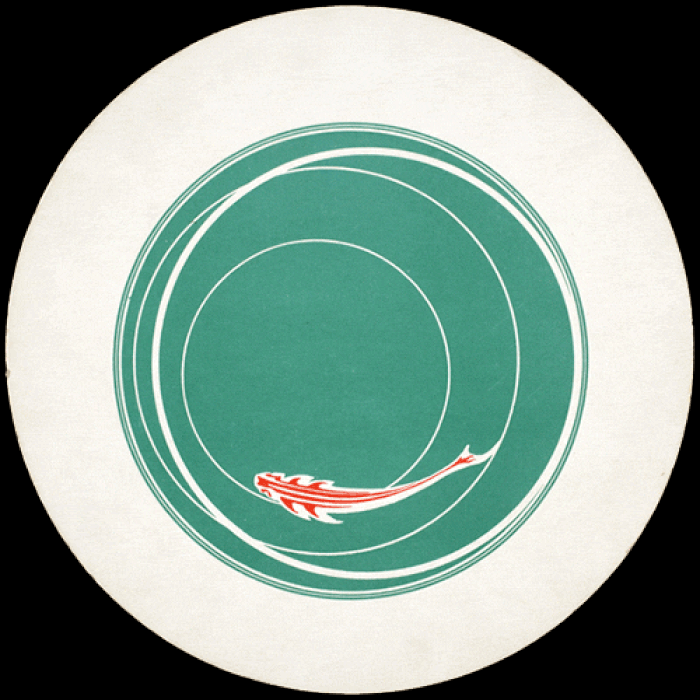
Marcel Duchamp
Rotorelief No. 5: Poisson Japonais
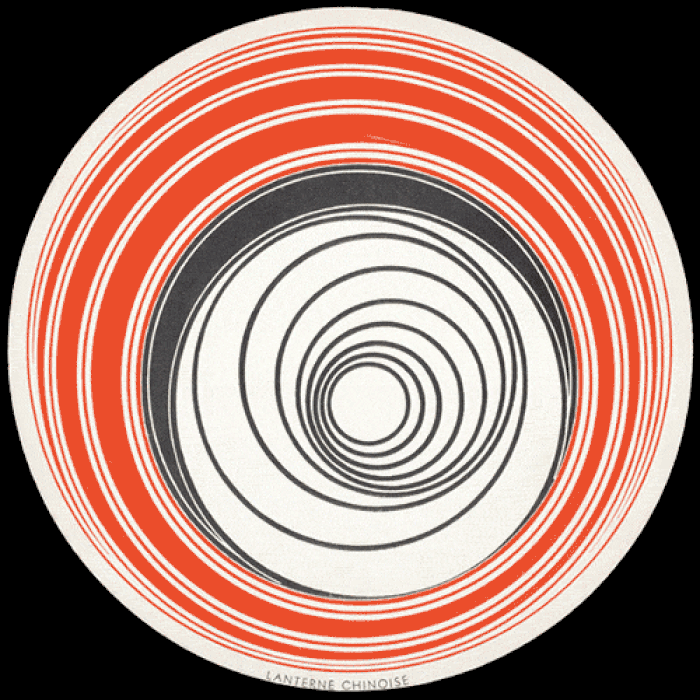
Marcel Duchamp
Rotorelief No. 3: Lanterne Chinoise
